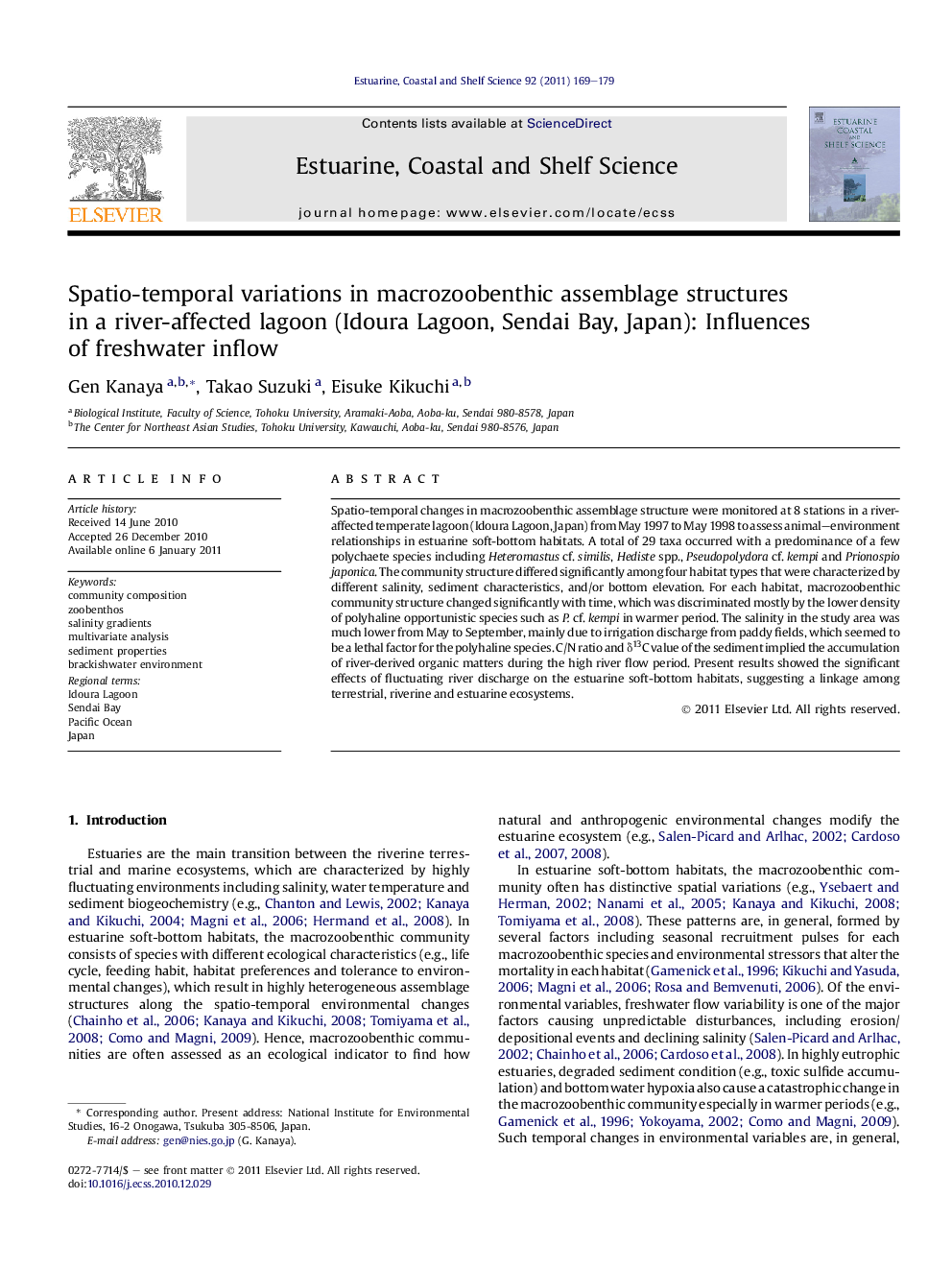| Article ID | Journal | Published Year | Pages | File Type |
|---|---|---|---|---|
| 4540597 | Estuarine, Coastal and Shelf Science | 2011 | 11 Pages |
Spatio-temporal changes in macrozoobenthic assemblage structure were monitored at 8 stations in a river-affected temperate lagoon (Idoura Lagoon, Japan) from May 1997 to May 1998 to assess animal–environment relationships in estuarine soft-bottom habitats. A total of 29 taxa occurred with a predominance of a few polychaete species including Heteromastus cf. similis, Hediste spp., Pseudopolydora cf. kempi and Prionospio japonica. The community structure differed significantly among four habitat types that were characterized by different salinity, sediment characteristics, and/or bottom elevation. For each habitat, macrozoobenthic community structure changed significantly with time, which was discriminated mostly by the lower density of polyhaline opportunistic species such as P. cf. kempi in warmer period. The salinity in the study area was much lower from May to September, mainly due to irrigation discharge from paddy fields, which seemed to be a lethal factor for the polyhaline species. C/N ratio and δ13C value of the sediment implied the accumulation of river-derived organic matters during the high river flow period. Present results showed the significant effects of fluctuating river discharge on the estuarine soft-bottom habitats, suggesting a linkage among terrestrial, riverine and estuarine ecosystems.
Research highlights► Infaunal community structure was monitored at 5 stations in a lagoon for one year. ► The structure differed clearly among 5 habitat types with different environments. ► Polyhaline polychaetes declined during warmer period with high river water discharge. ► Accumulation of river-derived organic matters was found in the area in warmer period. ► It was shown that fluctuating river discharge modified the estuarine habitats
